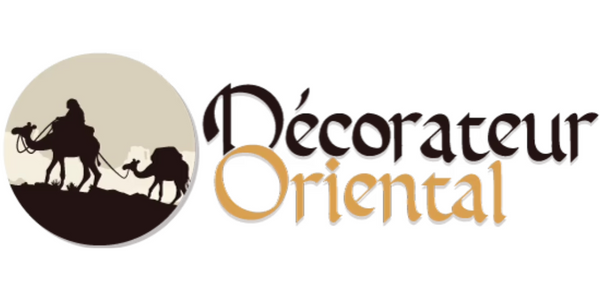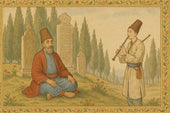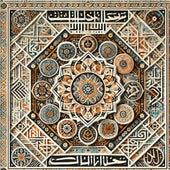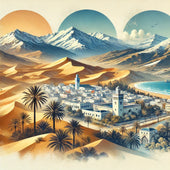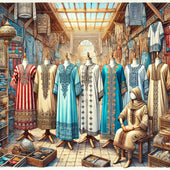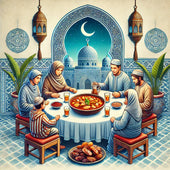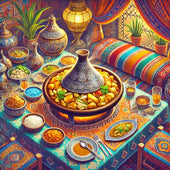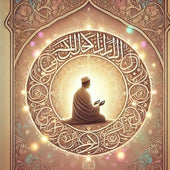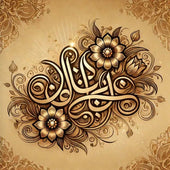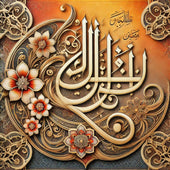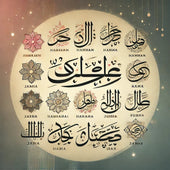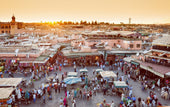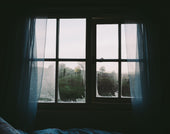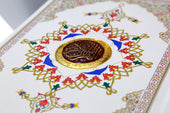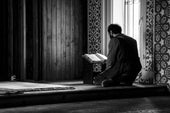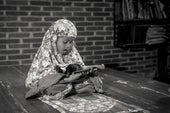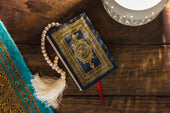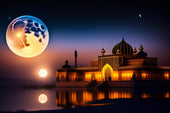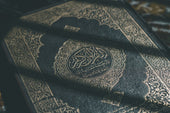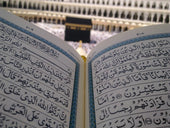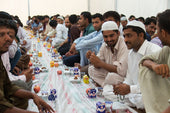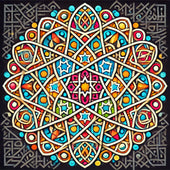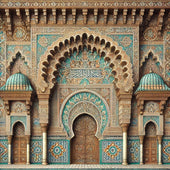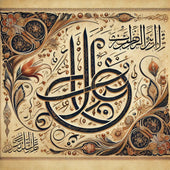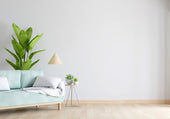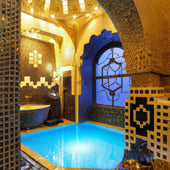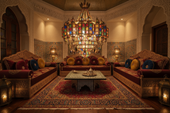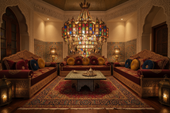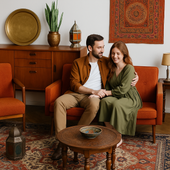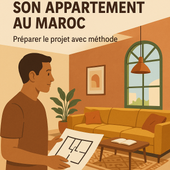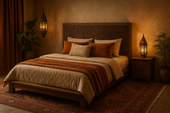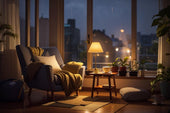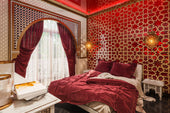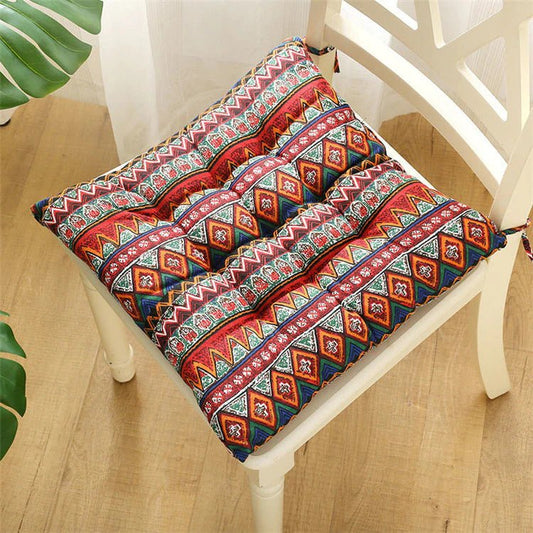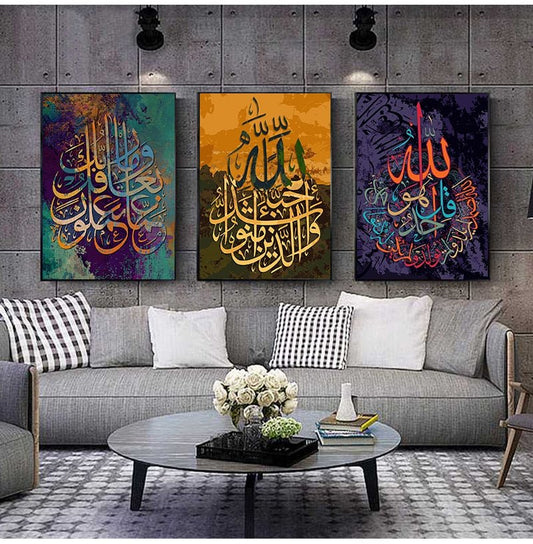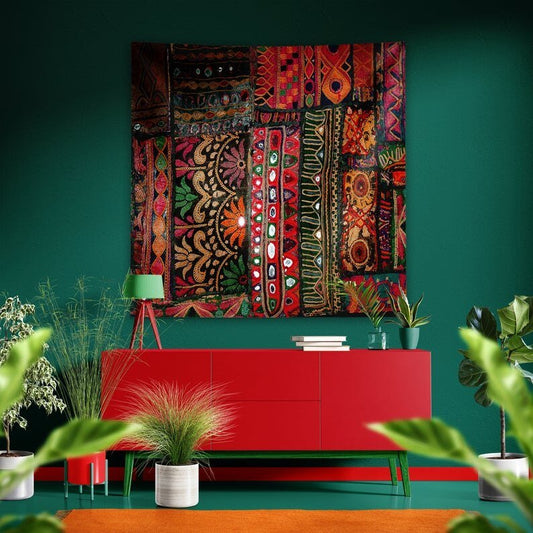The decoration of a Moroccan living room is unique in the world. It is an art of living that has spread widely in the Arab world thanks to the majesty of its style. The so-called “sedari” sofa benches, the tables or the lighting are all elements that show Moroccan identity throughout the world. These cultural imprints which are part of the national heritage are above all an honor given to the art of living, hospitality and gastronomy. Obviously, the table of a Moroccan living room cannot be devoid of decoration.
Moroccans have a habit of always adorning it with accessories so that they do not appear empty. Often, they make it possible to receive guests while ensuring their well-being.

Tablecloths in traditional embroidery to give style to your living room

Moroccan tablecloths preserve the wood of Moroccan tables. Very often, the women of the house attach importance to the tablecloth matching the decoration present in the heart of the benches. They allow to give style while allowing to dress the living room. The tablecloth is the first distinctive element that will allow you to put all the accessories that will decorate the table even in the absence of a guest. The embroideries are often made by hand and have a certain price. The cities of Fez and Meknes are known to house the most beautiful Moroccan embroideries. Finally, the Moroccan living room has the particularity of always being clean. Decorate with majestic rugs, benches, cushions and a traditional table, they are intended to receive guests or family for tea. Moreover, there is generally a clear separation between the Moroccan living room and the dining room. In Morocco, the accommodations are often separated by a small partition to make the difference between the two rooms.
The Moroccan tea service: essential to decorate the table

Mint tea is an institution in Morocco. Drink of the urban bourgeoisie in the 19th century, it has become the essential drink for all Moroccans. They even demonstrate the Cherifian way of life abroad. It is therefore necessary that all the accessories are present to adorn the table. It's a way not to leave the empty table where we take the snack.
The Moroccan table which is mainly used to drink tea with the family is often decorated with a majestic teapot and its golden glass service. You will often find:
- The transparent glass teapot which is the most fashionable accessory at the moment
- The traditional Fassi style silver teapot with four feet
Today, teapot styles are varied. The style and beauty they develop give this luxury side to a Moroccan living room.

Mini tajines in the form of several assembled cups

Each Moroccan living room is obviously personalized according to the tastes of each one. On the other hand, there are accessories that come back fairly quickly on Moroccan living room tables. These are all the elements that make it possible to serve food accompanying tea.
At the heart of decorated cups or mini tajines, there is very often the following list of dried fruits and oilseeds:
- Almonds
- Pistachios
- Berber Zamita
- Cashew nut
- Raisins.
Traditionally, Moroccans have the habit of reserving cups in which are served:
- Honey
- Olive oil
They will come and dip generous pieces of bread while sipping mint tea.
Cookie cutters and cake stands
An empty Moroccan coffee table is not viewed favorably by families. Because generosity and hospitality are two virtues very present in homes. It is a natural act and a form of respect when receiving neighbors or guests. It is therefore obvious that these decorative accessories typical of the Moroccan way of life are present. Generally, they come in the form of a plate superimposed on three levels. The housewife takes care to adorn them with the most beautiful cakes of Moroccan pastry such as:
- gazelle horns
- M'kharqa
- Makrout
- Chebakia…
Moroccan soup sets: a possibility when the living room is large

Large houses where large families live often have the habit of being decorated with two or three Moroccan tables for the living room. Suddenly, these empty tables require even more decorative elements. Very often tables are decorated in a similar style. Stores specializing in this art of living offer luxurious and varied ranges. Porcelain soup sets are very popular in the heart of Moroccan living rooms. They serve as an excellent decoration to give an oriental style. They will be accompanied by tureens, bowls and very original spoons made in an Arab-Andalusian style.
